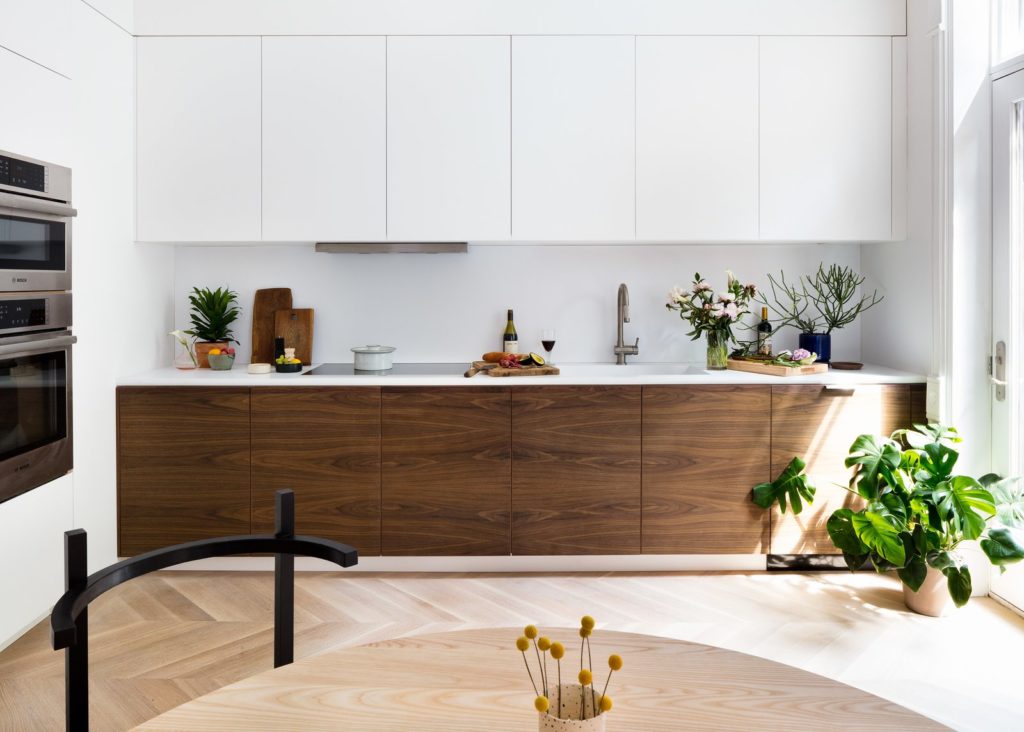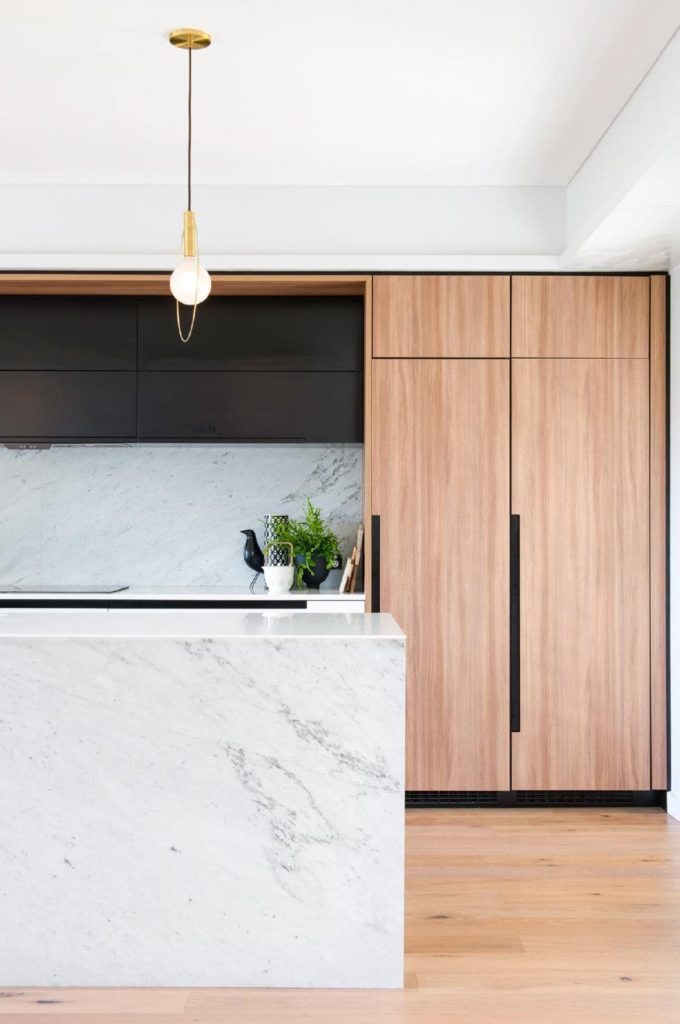Matching
February 15, 2022
Last time we wrote about how there are many ways to add visual interest, from texture to colour, and materials and shape. Well another way to change a design drastically is to pay attention to how things are lined up or matched. Whether with tile, stone, wood, just about anything with lines in it can be matched a certain way to achieve your goal. Here is a look at a few popular ways to match.
Book Matched
This is when it looks like you’ve opened a book down the middle. Almost a mirror image. In the photo above the stone has this kind of ridge down the middle, creating this very uplifting, eye-catching vertical line. This is book matching. In wood it can also be done not only matching and flipping a veneer but also by cutting the wood in what is known as a rift cut to produce a cathedral grain.

Grain Matched – Horizontal or Vertical
You can match grains in mainly two ways. Vertically and Horizontally. The picture above the walnut is lined up beautifully to produce this centre focal point of all the cathedrals in the wood bringing you to the centre. This was really well planned and even the dishwasher panel just creates this perfect uniformed run of cabinets, almost hiding the seams. The picture below runs the grain vertical. Whichever way you run the grain will either make the space feel taller if run vertically or wider if run horizontally. So maybe think of running horizontally in a narrower space or slammed in between walls. The opposite can be said of vertical grain patterns.

Lastly this is the way cabinets have been done for so long. Unmatched, and with some rules. Doors would be done with a vertical grain whether they were base cabinets or upper cabinets. Drawers would then be done with a horizontal grain. The main reason is waste & structural integrity. This is mostly done in framed solid wood doors because of warping and twisting of the wood, so that over time your doors and drawers will stay the same as they did when you first bought them. The frame holds the centre panel stable and making a drawer that is let’s say six inches high and thirty six inches wide would bend very easily over time if the grain ran only 6 inches high, but take those same dimensions and turn the grain so that it runs horizontally 36” it becomes much more stronger and more resistant to warping.
So next time you’re out and seeing a new kitchen or maybe a kitchen you’ve seen a hundred times, see what kind of grain pattern they are running. It can tell you a lot about what the goals were with the space. Was the goal to have solid wood panels or an eye catching eye moving theatrical focal point?
1 | 2 | 3